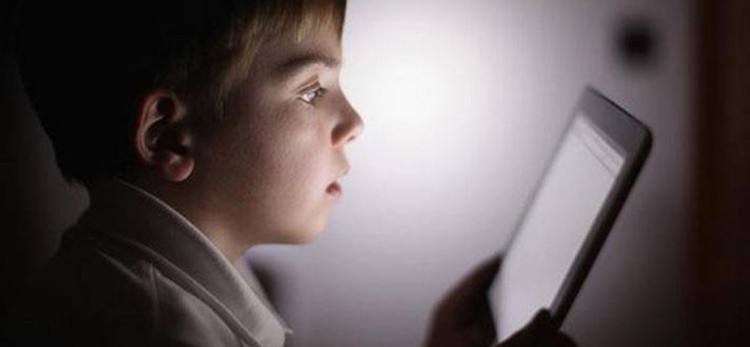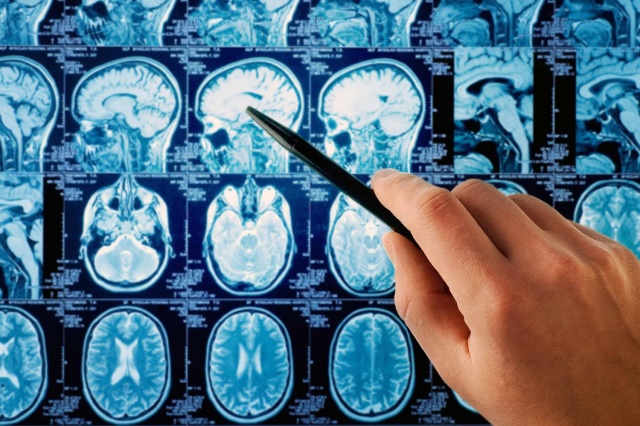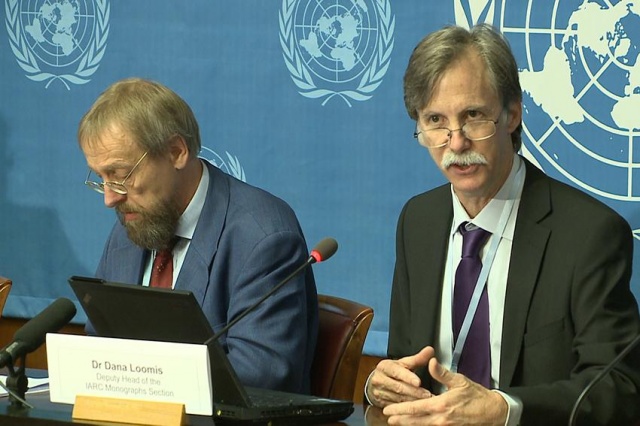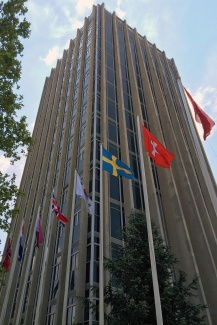October 2015 – “Environmental Health Trust”
[Eminenti scienziati e medici consiglieri della Environmental Health Trust (EHT), hanno inviato una lettera aperta al Segretario dell’Istruzione degli Stati Uniti Arne Duncan e al Segretario entrante John King, spiegando nei dettagli la vulnerabilità specifica dei bambini nei confronti dei danni alla salute derivanti dall’uso della tecnologia wireless.]
Top medical experts advise schools to stop experimenting on our children. WiFi in Schools is Risky Business that has never been evaluated for safety.
Leading expert scientists and doctors who are advisors of the Environmental Health Trust (EHT) have sent an open letter to U.S. Secretary of Education Arne Duncan and incoming acting Secretary John King detailing children’s unique vulnerability to the health risks of wireless technology. The scientists outline specific steps the U.S. Department of Education can take to safeguard children’s health in the 21st century, such as choosing safe corded (non-wireless) technology and creating a national education program for students. The scientists applaud the fact that such efforts are already well implemented in several schools and countries and call on the United States to take a leadership role.
The letter cites how over 20 countries have taken a precautionary approach to the issue of wireless and are educating citizens on how to reduce exposures with many recommending against wireless in schools. Early in 2015, France passed a national law banning wifi from nursery schools and mandating that schools turn off wifi whenever it is not in use, and Israel has established a new national institute to review scientific evidence and recommends wired computers for teachers. In the United States, both public and private schools are taking steps to reduce and remove wireless exposures. EHT maintains an updated list of these policy actions.
In 2013, the American Academy of Pediatrics wrote to the FCC calling for more protective wireless RF-EMF radiation exposure standards and stated, “Children are not little adults and are disproportionately impacted by all environmental exposures, including cellphone radiation. Current FCC standards do not account for the unique vulnerability and use patterns specific to pregnant women and children.”
“Considering that no research documents long-term exposure to low-intensity microwave radiation as safe for children, the best approach is precautionary.” The letter references the accumulated scientific research showing that wireless radiation, also known as radio-frequency (RF) radiation or microwave radiation, could increase cancer risk and has been shown to damage the reproductive system and alter neurological development.
The letter cites the research of Yale Professor Dr. Hugh Taylor that showed prenatal exposure resulted in decreased memory and hyperactivity in offspring. This study joins a growing list of experimental research showing neurotoxic effects which has informed the BabySafe Project of over 100 physicians who recommend reduced wireless exposures for pregnant women in order to mitigate the risk of fetal brain damage.
Professor Martha Herbert, MD PhD, a Harvard pediatric neurologist, is quoted: “RF radiation from wifi and cell towers can exert a disorganizing effect on the ability to learn and remember, and can also be destabilizing to immune and metabolic function.”
The scientists made the following recommendations to the U.S. Department of Education:
1. Raise school community awareness through new educational curriculum:Students, teachers, and their families should be given information on wireless health risks and simple precautionary steps they can take to protect their health. It is important to teach children how to use technology both safely and more responsibly in order to protect their health and wellbeing.
2. Install a safe communication and information technology infrastructure in schools to meet educational needs: Solutions exist to reduce exposures to wireless emissions and mitigate the health risk. Low-EMF Best Practices have been developed allowing educational needs to be met with safer hard-wired Internet connections, which are also faster and more secure.
“A 21st century classroom must bridge the digital divide in the safest way possible. The United States of America can thoughtfully integrate safe technology into every classroom while safeguarding the health of generations to come by installing safe and secure wired internet connections.” stated Dr. Davis, President of the EHT and Visiting Professor, The Hebrew University Medical School.
Please download the letter at this link.
In fall 2014, the EHT wrote to several educational organizations—including the National Education Association, the National Association of Independent Schools and the National Parent Teacher Association—informing them of the health risks of wireless installations. Letters are available on the EHT Schools and Safe Technology webpage.
This new letter calls on the U.S. Department of Education to provide leadership on common sense technology steps to safeguard children’s health just as classrooms across the country are upgrading their technology systems. EHT applauds the Collaborative for High Performance Schools Low EMF criteria which provides the detailed steps schools can take to reduce EMF exposures.
Scientists have long been cautioning against wireless networks in schools and, most recently, new letters from scientists to a Massachusetts school were included in a federal complaint filed by parents alleging the school’s upgraded wireless network made their child ill.
In 2014, an independent group of 29 international expert scientists of the Bioinitiative Report wrote a letter to the CEOs of wireless technology education companies such as Google, Dell, Apple, Adobe and Facebook stating that, “It does not reflect well on the ethics of your corporations to encourage the FCC to provide $2 billion dollars for new wireless classroom infrastructure and devices for school children, knowing that wireless emissions have been classified as a Possible Human Carcinogen by the World Health Organization’s International Agency for Research on Cancer (2011). To promote wireless technologies in schools is to deliberately and knowingly disregard current health warnings from international science and public health experts.” These scientists have long made clear recommendations for Low-EMF Best Practices in schools based on the published scientific research.
Recently, a group of over 200 scientists (who have collectively published over 2,000 peer-reviewed papers on non-ionizing radiation)appealed to the United Nations for immediate action on this issue in order to protect public health and the environment.
Over 20 countries now take a precautionary stance towards wireless radiation. As an example, former Microsoft President Frank Clegg heads a safe technology organization C4ST calling on federal election candidates in Canada to develop an awareness campaign related to the safe use of information and communication technologies in schools after the Canadian Parliamentary Health Committee unanimously voted for 12 recommendations concerning wireless radiation and public health.
ABOUT THE SCIENTISTS
Anthony B. Miller, MD FACE , Professor Emeritus at the Dalla Lana School of Public Health, University of Toronto, is a physician and epidemiologist specializing in cancer etiology, prevention and screening. He has conducted research on ionizing radiation and electromagnetic fields and cancer, and other aspects of cancer causation. He has served on many expert committees assessing the carcinogenicity of various exposures, including working groups of the World Health Organization’s International Agency for Research on Cancer.
Devra Davis, PhD MPH, is President of the Environmental Health Trust, a non-profit scientific and policy think tank. She was the founding director of the Board on Environmental Studies and Toxicology of the U.S. National Research Council and Founding Director, Center for Environmental Oncology, University of Pittsburgh Cancer Institute. President Clinton appointed Dr. Davis to the newly established Chemical Safety and Hazard Investigation Board, and she is a former Senior Advisor to the Assistant Secretary for Health in the Department of Health and Human Services.
Priyanka Bandara, BSc, PhD, is an Australian researcher/educator in environmental health. She has worked as a clinical researcher at Westmead and Royal Prince Alfred Hospitals and University of Sydney Medicine and as a research scientist (biochemistry and molecular pharmacology) at the University of NSW.
Gunnar Heuser MD PhD FACP, is a practicing physician and clinical toxicologist who has coauthored several books, scientific papers and abstracts with a special emphasis on neurotoxicology and immunotoxicology. He has given expert comments to the EPA and served on advisory committees and testified to the U.S. Congress on toxic chemicals and human health.
Beatrice Alexandra Golomb, MD PhD, is a Professor of Medicine at University of California San Diego School of Medicine. She has worked as Chief Scientist for the Department of Veterans Affairs Research Advisory Committee on Gulf War Veterans’ Illnesses. She has published numerous scientific research papers and coauthored books with a focus on chemical exposures, toxicity and neurobiology.
Robert D. Morris, MD, PhD, is a physician and an environmental epidemiologist. He has taught at Tufts University School of Medicine, Harvard University School of Public Health and the Medical College of Wisconsin and has served as an advisor to the EPA, CDC, NIH, the President’s Cancer Panel and worked with the National Academy of Sciences Committee on Environmental Epidemiology and with the National Cancer Institute.
Annie Sasco, MD DrPH, has served 22 years as Unit Chief of Epidemiology for Cancer Prevention at the International Agency for Research on Cancer (IARC) in Lyon, France and served as Acting Chief of the Cancer Control Programme of the World Health Organization (WHO). She specializes in cancer research and epidemiology and holds two Masters plus a Doctoral degree from Harvard University.
ABOUT ENVIRONMENTAL HEALTH TRUST
Environmental Health Trust (EHT) educates individuals, health professionals and communities about controllable environmental health risks and policy changes needed to reduce those risks. Currently, EHT is raising health concerns about wireless in schools and recommending safer hardwired internet connection installations. The Environmental Health Trust maintains a regularly updateddatabase of worldwide precautionary policies on wireless related to children and schools. Please visit EHtrust.org and on Facebook.
RESOURCES
Download the October 13, 2015 Letter here http://ehtrust.org/wp-content/uploads/2015/10/Letter-to-U.S.-Secretary-of-Education-from-EHT-on-Wireless-in-Schools-October-13-2015-.pdf
Letters by Scientifc Experts Against Wireless Networks to Fay School Trusteeshttp://ehtrust.org/wp-content/uploads/2015/10/Expert-Letters-Against-WiFi-to-Fay-school-trustees.pdf
Collaborative for High Performance Schools Low-EMF Best Practices http://ehtrust.org/wp-content/uploads/2015/10/US-CHPS__Criteria_2014_Low-EMF-Criteria102314.pdf
VIDEOS
Dr. Devra Davis and Dr. Sharma Lecture at George Washington University on Wireless and Health June 2015 https://www.youtube.com/watch?v=LNeA26lQTvA
Dr. Devra Davis lectures at the National Institute of Environmental Health Sciences (NIEHS) https://www.youtube.com/watch?v=wNNSztN7wJc
Excerpt from Q and A at George Washington University on the issue of wireless in school https://www.youtube.com/watch?v=1gkcPZV4coQ
Fonte:
http://ehtrust.org/expert-docs-urge-u-s-secretary-of-education-play-it-safe-with-kids-go-wired-not-wifi/




